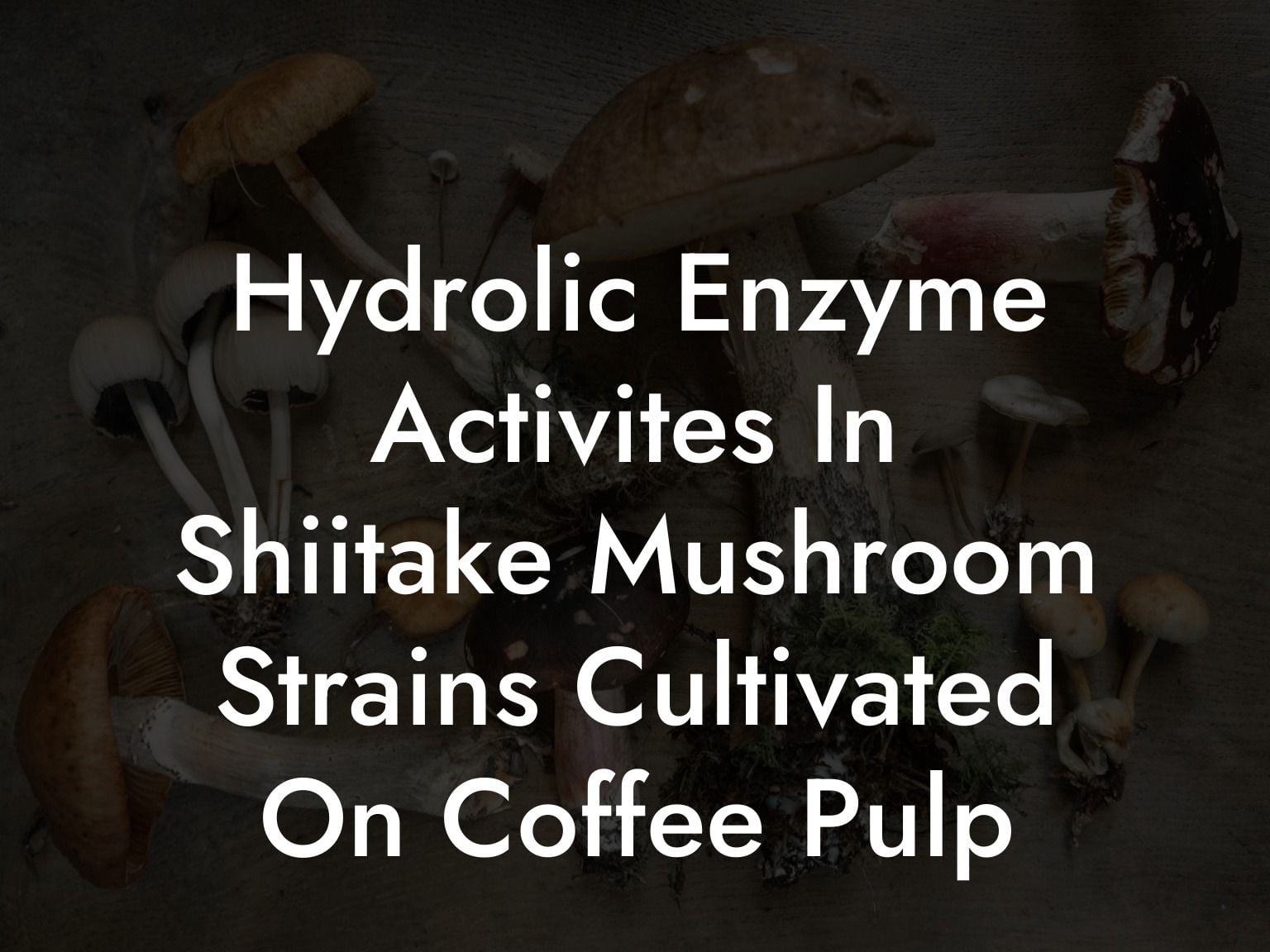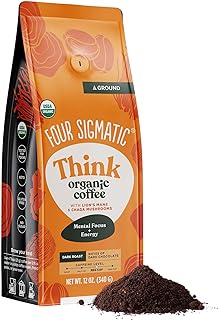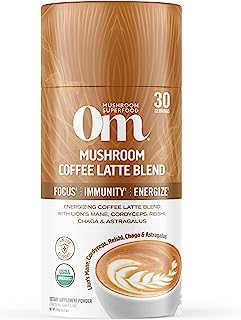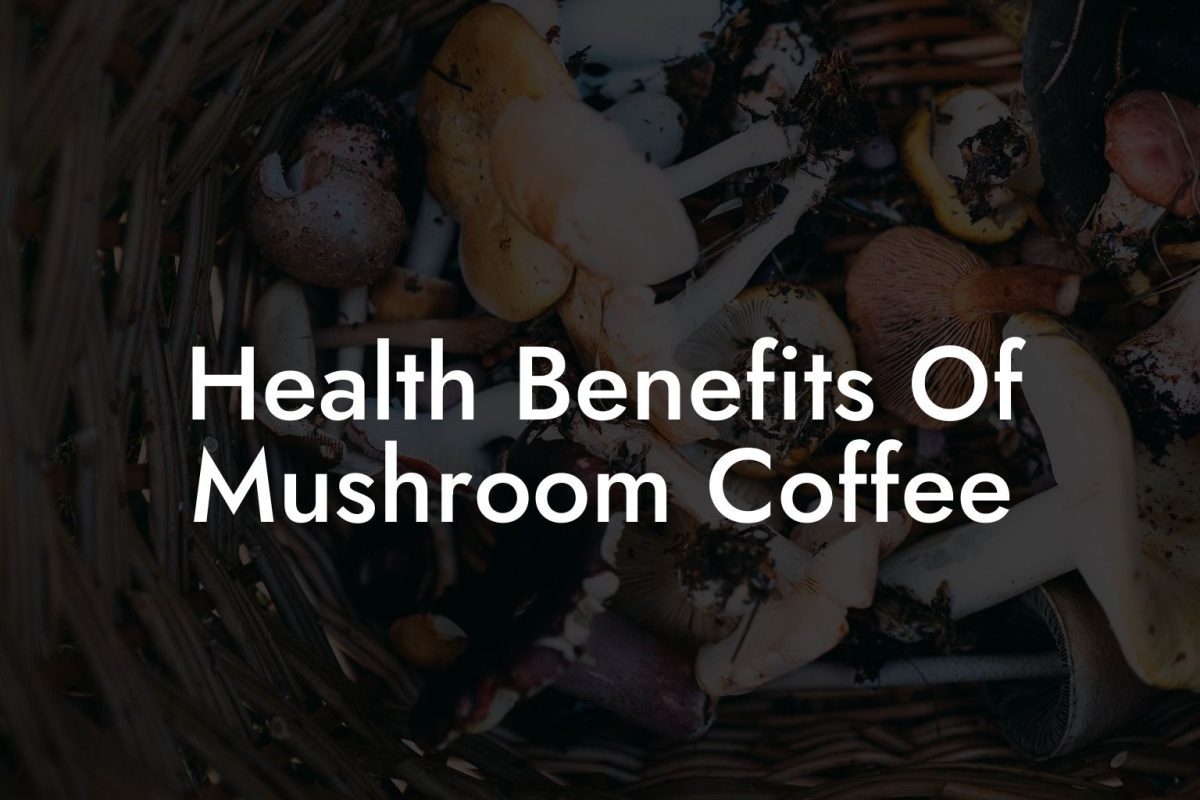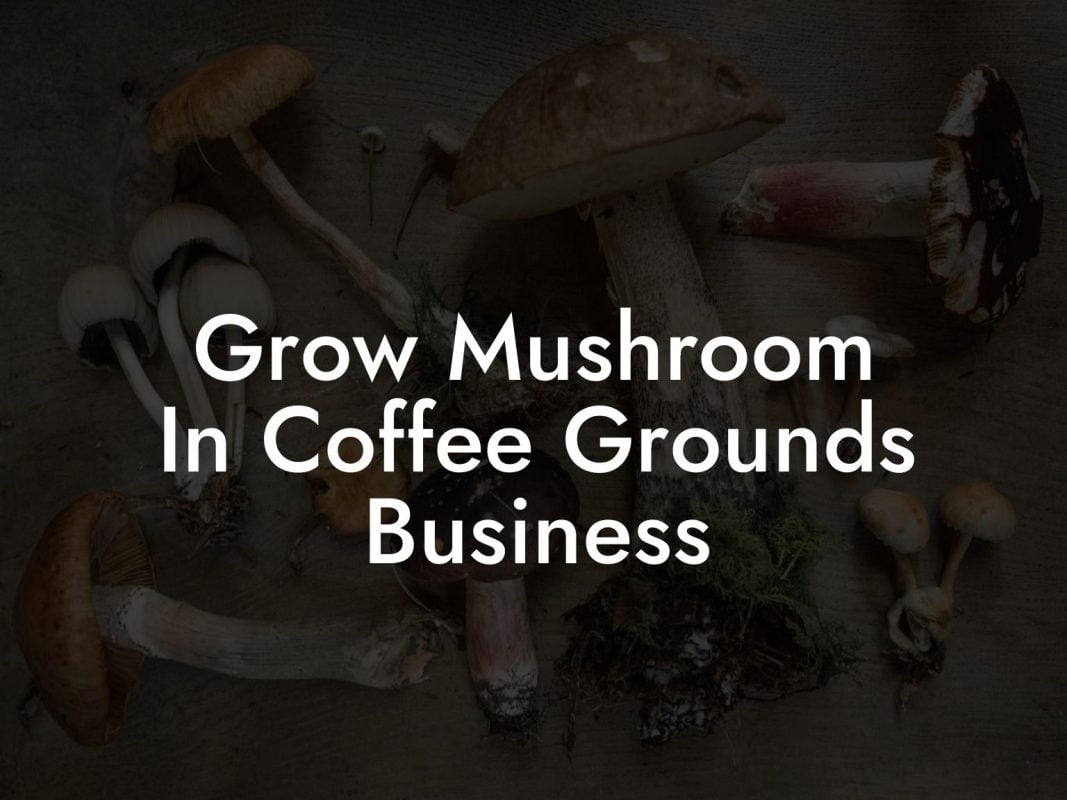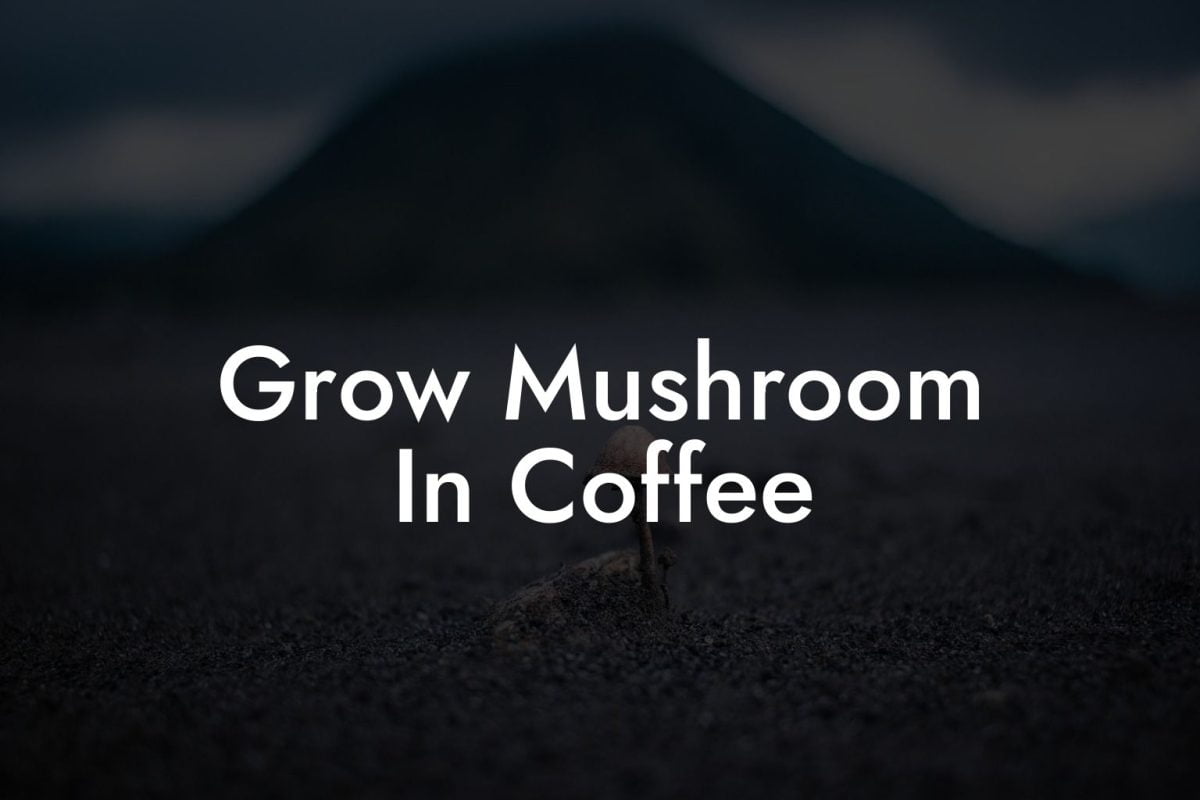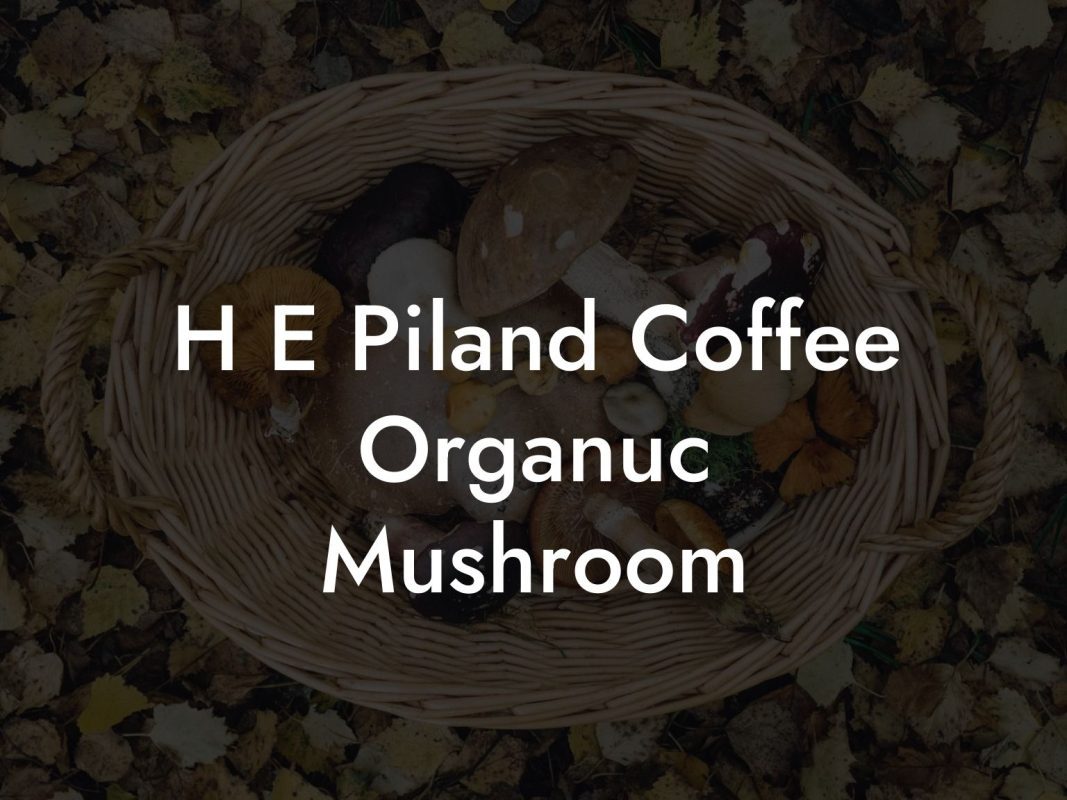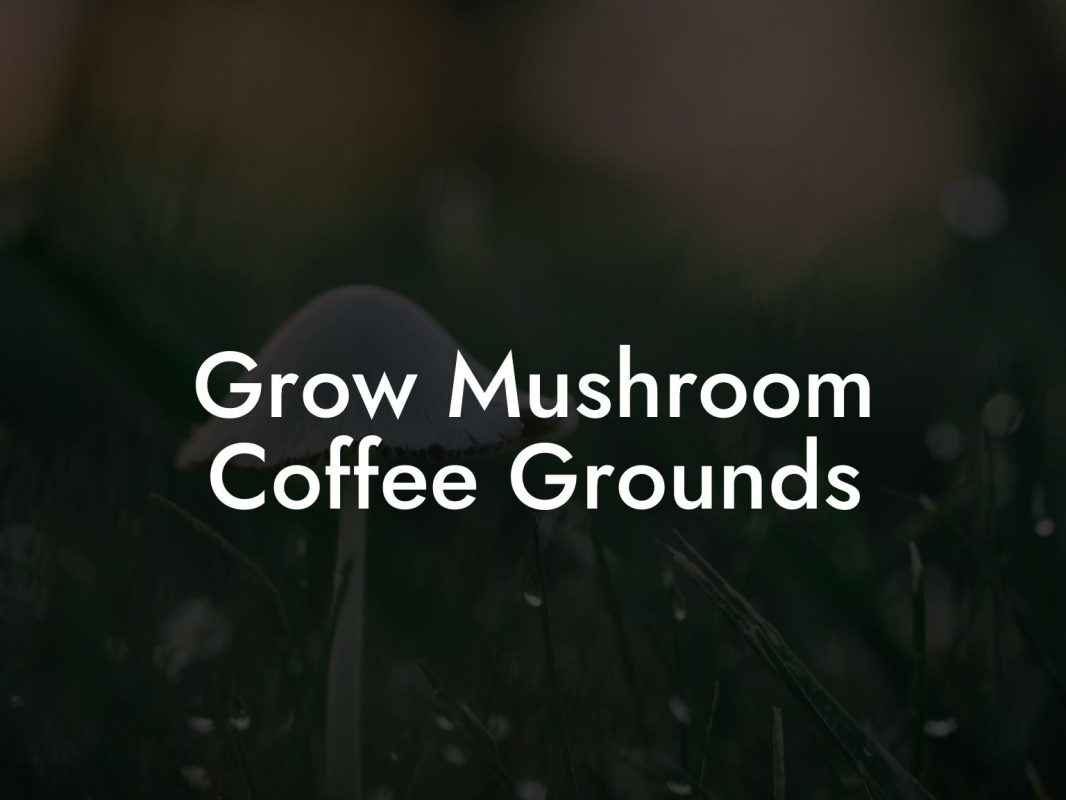Ever imagined a world where gourmet coffee meets the magic of mushroom cultivation? Welcome to the curious universe of hydrolic enzyme activities in shiitake mushroom strains cultivated on coffee pulp—a groundbreaking fusion of sustainable agriculture, modern biotechnology, and a dash of Gen-Z cool. In this deep-dive exploration, we’re about to unravel how these powerhouse enzymes work, why coffee pulp is the unsung hero in mushroom farming, and what it means for innovative mushroom coffee trends and eco-friendly farming practices. Buckle up as we take you on an exciting journey into the science, art, and eco-revolution behind this extraordinary phenomenon!
Quick Links to Useful Sections
- Discovering the Unlikely Duo: Shiitake Mushrooms and Coffee Pulp
- Understanding Hydrolic Enzyme Activities: The Science Unraveled
- The Secret Life of Enzymes: How They Transform Coffee Pulp
- Breaking Down the Complexities
- The Role of Moisture and pH in Enzymatic Activity
- Biochemical Synergies: More Than the Sum of Their Parts
- The Art and Science of Cultivating Shiitake Mushrooms on Coffee Pulp
- Hydrolic Enzymes: Nutritional Powerhouses Fueling Mushroom Health
- Environmental and Economic Perks of This Cutting-Edge Cultivation Method
- Innovative Research and Future Perspectives on Hydrolic Enzymes in Mushroom Cultivation
- Decoding the Molecular Mechanisms: A Deep Dive into Enzyme Kinetics
- Resources and Community Support: Your Next Steps
- Integrative Perspectives: Merging Tradition and Innovation
- Success Stories: Case Studies in Enzyme-Enhanced Mushroom Cultivation
- A New Dawn in Urban Farming
- Revitalizing Rural Economies
- Innovation in a Cup: The Rise of Mushroom Coffee
- Crafting Your Own Experiment: Tips for Aspiring Mycologists
- Hydrolic Enzyme Activities FAQs: Your Questions Answered
- Your Journey Into the Future of Fungal Innovation
Discovering the Unlikely Duo: Shiitake Mushrooms and Coffee Pulp
Picture this: freshly brewed coffee energizing your morning routine, but what if your coffee grounds could also feed a thriving fungal ecosystem? That’s right—coffee pulp, a by-product of coffee processing, is now being repurposed as a nutrient-rich growth medium for shiitake mushrooms. These aren’t your average mushrooms; shiitake strains flourishing on coffee pulp are turning heads in the sustainable agriculture scene for their unique hydrolic enzyme activities.
In the quest for sustainability and enhanced flavors in mushroom coffee, agricultural innovators have combined the rich organic material of coffee pulp with the robust growth capabilities of shiitake mushrooms. The result? Mushrooms that are not only packed with deep, earthy flavors but also endowed with an exceptional enzymatic profile that could change the way we view fungal cultivation.
Integrating coffee pulp into shiitake cultivation taps into the secret life of enzymes. These specialized proteins work like tiny biochemical wizards, accelerating the decomposition of organic materials, modulating growth rates, and even boosting the nutritional profile of both the mushrooms and the crop substrate. For a Gen-Z and millennial audience fascinated by both eco-innovations and wellness trends, this natural synergy is nothing short of a modern marvel.
Understanding Hydrolic Enzyme Activities: The Science Unraveled
The term “hydrolic enzyme activities” might sound like a mouthful, but let’s break it down with a bit of scientific pizzazz. These enzymes, predominantly secreted by fungal mycelia, facilitate the breakdown of complex organic compounds found in coffee pulp into simpler molecules. In essence, they work as microscopic powerhouses, orchestrating a symphony of biochemical reactions that unlock nutrients and create a more favorable environment for mushroom growth.
Looking For The Best Mushroom Coffee? You'll Love These:
Here’s the lowdown: when shiitake mushrooms are grown on coffee pulp, the substrate’s high levels of organic acids, proteins, and carbohydrates create a bustling biochemical playground. In such a dynamic environment, hydrolic enzymes—like cellulases, hemicellulases, ligninases, and proteases—play an essential role. They help transform rigid coffee pulp fibers into accessible nutrients, which in turn supercharge the growth of shiitake mycelia.
What makes these enzyme activities so hydrolic? It’s not just about breaking things down; it’s about doing it in a way that mimics natural water-mediated processes. Water acts as a catalyst, ensuring that the enzyme reactions remain efficient, even in varying moisture conditions. This hydrolytic power is central to achieving robust mushroom yield, optimizing substrate use, and even enhancing the flavor profile and medicinal qualities of shiitake mushrooms.
In our modern quest to merge tradition with innovation, these enzymatic dynamics offer fresh insights into sustainable cultivation practices. And yes, it’s as cool as it sounds: think of it as nature’s artisan barista crafting the perfect brew of fungal finesse and eco-conscious consumption.
The Secret Life of Enzymes: How They Transform Coffee Pulp
Coffee pulp is more than just waste—it’s a goldmine of organic compounds waiting to be reborn. When shiitake mushrooms come into contact with this pulp, a cascade of enzyme-mediated reactions begins. Here’s a closer look at the process:
Breaking Down the Complexities
The structure of coffee pulp is notoriously complex. Laden with cellulose, hemicellulose, lignin, and bound proteins, it’s an intricate matrix. Hydrolic enzymes, particularly cellulases and hemicellulases, initiate the process by breaking these polymers into simpler sugars. These sugars serve as the immediate source of energy for developing mycelia—a crucial step in fungal colonization.
Moreover, ligninases target the tough lignin bonds, opening up the substrate and rendering it more porous. This not only accelerates nutrient availability but also improves water retention within the coffee pulp, optimizing the microenvironment for enzyme activity.
The Role of Moisture and pH in Enzymatic Activity
Hydrolytic enzymes are highly sensitive to their environment, with moisture and pH standing as two of the most critical factors. Coffee pulp inherently retains moisture, creating an ideal setting for sustained enzyme activity. The hydrolytic process thrives in a slightly acidic to neutral pH, conditions that are typically inherent in coffee pulp due to its organic acid content.
The interplay between water availability and pH stability ensures that the enzymes don’t just work—they perform efficiently, expediting nutrient release while simultaneously maintaining the delicate balance required for optimal shiitake growth.
Biochemical Synergies: More Than the Sum of Their Parts
Beyond individual enzyme functions, a remarkable synergy occurs when these enzymes work in tandem. For instance, as proteases break down large protein molecules, smaller peptides and amino acids emerge, which serve as cofactors, further enhancing the activity of other hydrolases. This symbiotic interplay not only catalyzes the decomposition of the substrate but also contributes to the biosynthesis of beneficial byproducts that might have antioxidant or anti-inflammatory properties.
In the microcosm of the mushroom farm, this enzymatic ballet converts what was once an agricultural by-product into a potent medium for cultivating high-quality shiitake mushrooms, boasting improved texture, nutritional density, and even a flavor profile that resonates with the increasingly trendy mushroom coffee movement.
The Art and Science of Cultivating Shiitake Mushrooms on Coffee Pulp
Transitioning from the biochemistry lab to the mushroom farm, cultivating shiitake mushrooms on coffee pulp is both an art and a science. It starts with selecting premium-quality coffee pulp—a by-product that would otherwise contribute to waste—and repurposing it as a sustainable substrate.
Growers first need to ensure that the coffee pulp has been properly processed, free from contaminants and balanced in moisture content. This involves techniques such as composting and pasteurization, which prepare the pulp for inoculation with shiitake spawn.
Once the coffee pulp is ready, shiitake spawn (the fungal equivalent of seeds) is introduced. At this crucial point, the natural hydrolic enzyme activities kick into gear. The enzymes not only digest the coffee pulp but also support the development and expansion of the shiitake mycelia. It’s like setting off a chain reaction: the more efficient the enzyme activity, the healthier and faster the mushroom growth.
The benefits for growers are manifold. Using coffee pulp as a substrate is cost-effective, environmentally friendly, and it lends the final product—a delicately flavoured, enzyme-rich shiitake mushroom—a unique twist that appeals to eco-conscious consumers and mushroom coffee aficionados alike.
This innovative cultivation method is a win-win proposition. Not only is it sustainable by transforming waste into valuable input, but it also pushes the envelope on what’s possible in modern mushroom farming, infusing traditional practices with a vibrant pulse of modern science.
Hydrolic Enzymes: Nutritional Powerhouses Fueling Mushroom Health
When you consider the nutritional profile of shiitake mushrooms, it’s clear that their benefits extend well beyond that umami flavor profile. The enzymatic processes catalyzed by hydrolic enzymes lead to mushrooms that boast higher concentrations of bioactive compounds, including antioxidants, beta-glucans, vitamins, and essential amino acids.
Through the accelerated decomposition of coffee pulp, these enzymes facilitate a more concentrated release of nutrients. This means that the final mushrooms can be richer in beneficial micronutrients, making them a sought-after ingredient in gourmet mushroom coffee blends and functional food products.
For modern consumers who demand transparency and health benefits from what they ingest, this synergy of enzyme activity and natural substrates offers a refreshing narrative. Not only are you savoring a cup of mushroom coffee with a kick of earthy flavor, but you’re also tapping into the inherent nutritional prowess of shiitake mushrooms grown in an eco-friendly environment.
Moreover, the enhanced enzyme-driven breakdown of coffee pulp contributes to faster mycelial colonization, which, in turn, can lead to earlier harvest times—a critical factor for commercial growers wanting to maximize both yield and quality.
Environmental and Economic Perks of This Cutting-Edge Cultivation Method
Sustainability isn’t just a buzzword—it’s a guiding principle for the next generation of agricultural innovation. By cultivating shiitake mushrooms on coffee pulp, farmers reduce waste, lower production costs, and contribute to a circular economy. Recycling coffee pulp, which is often discarded as an environmental burden, into valuable mushroom substrate is a powerful example of how eco-conscious practices can drive economic growth.
Economically, this method offers advantages on several fronts:
- Cost Efficiency: Coffee pulp is a low-cost substrate compared to traditional sawdust or hardwood logs, meaning lower input prices for quality mushroom production.
- Waste Reduction: Reusing coffee pulp helps reduce the environmental impact of coffee processing, adding an extra green badge to your product’s story.
- Market Appeal: Eco-conscious consumers and the burgeoning mushroom coffee community are drawn to products that emphasize sustainability and innovative cultivation methods.
- Enhanced Yield: Due to superior enzyme activities, shiitake mushrooms grown on coffee pulp can exhibit faster colonization and higher yields, which directly translate to increased profitability.
On a broader scale, integrating such sustainable practices supports community resilience and promotes agricultural biodiversity. As more farming communities adopt these methods, we edge closer to a future where waste becomes a resource, and every by-product has the potential to spark a revolutionary new cuisine.
Innovative Research and Future Perspectives on Hydrolic Enzymes in Mushroom Cultivation
The research around hydrolic enzyme activities in shiitake mushrooms cultivated on coffee pulp is still evolving, but early findings are paving the way for exciting future advancements. Universities, independent research labs, and even DIY bio-hackers are now turning their attention to this intersection of microbiology and sustainable agriculture.
Studies are exploring ways to enhance enzyme efficiency through genetic selection and substrate engineering. Researchers are also investigating how adjusting the moisture levels, pH, and nutrient composition of coffee pulp could further boost enzymatic performance. Imagine custom-tailored coffee pulp blends engineered to optimize enzyme turnover rates and yield the ultimate superfood mushrooms!
Additionally, the potential crossovers into bioremediation and waste management show great promise. Hydrolic enzymes are not only crucial for mushroom development—they might also be harnessed to break down agricultural and industrial wastes, contributing to a cleaner planet. Such research underscores the idea that sustainable practices in one field can have ripple effects across multiple industries.
For the Gen-Z and millennial innovators out there, this research is a call to action. Whether you’re a budding scientist, an eco-entrepreneur, or simply someone who loves a good cup of mushroom coffee, the future holds endless possibilities for creativity and sustainability in agriculture.
Decoding the Molecular Mechanisms: A Deep Dive into Enzyme Kinetics
For those of you with a penchant for the molecular details, let’s geek out on enzyme kinetics. Hydrolic enzymes, like cellulases and proteases, operate following the highly specific Michaelis-Menten kinetics. In layman’s terms, these enzymes bind to their specific substrates in coffee pulp, catalyzing reactions that turn complex molecules into simpler compounds.
The efficiency of these biochemical reactions is maintained by a delicate balance between the enzyme concentration, substrate availability, and environmental factors such as temperature and moisture. Sophisticated techniques like spectrophotometry and chromatography are used by researchers to measure these interactions in real time, offering insights that could refine our understanding of fungal metabolism.
This molecular-level understanding not only helps optimize the cultivation process but also opens up avenues for future biotechnological applications. With advanced genomic and proteomic tools, scientists are now able to tweak the expression of these enzymes, tailoring shiitake mushrooms to deliver enhanced flavor, nutrition, and even medicinal properties. The convergence of high-tech science with age-old farming practices is, without a doubt, the pinnacle of modern eco-innovation.
Resources and Community Support: Your Next Steps
Embarking on a journey into the world of hydrolic enzyme activities and sustainable mushroom cultivation can be daunting—but remember, you’re not alone. There’s a vibrant community of researchers, growers, and eco-curious enthusiasts who are eager to share their insights and resources.
Whether you’re looking to start your own mushroom coffee venture, delve into DIY mycology experiments, or simply want to stay informed about the latest breakthroughs in enzyme research, the community is thriving and ready to welcome you.
Here are some resources and next steps to get you pointed in the right direction:
- Academic Journals: Publications on fungal biotechnology and substrate engineering offer cutting-edge research findings. Look for journals in agricultural sciences, microbiology, and bioengineering.
- Online Forums & Social Media: Platforms like Reddit, specialized Facebook groups, and Twitter threads are buzzing with discussions about sustainable mushroom cultivation. Connect, ask questions, and share your innovations.
- Local Workshops & Courses: Many agricultural extension programs and local community colleges offer workshops on sustainable farming, mycology, and even mushroom coffee brewing techniques.
- DIY Kits: For the hands-on experimenter, commercial kits for growing shiitake mushrooms on alternative substrates (including coffee pulp) are an accessible way to dive in.
Embracing an innovative cultivation path means continuous learning and community engagement. As you experiment, share your successes and setbacks on social media using hashtags like #MushroomRevolution, #SustainableFungi, and #EcoCoffee. The journey is as much about connection as it is about cultivation.
Integrative Perspectives: Merging Tradition and Innovation
At its core, cultivating shiitake mushrooms on coffee pulp is a brilliant example of marrying old-world practices with new-age innovation. Traditionally, shiitake mushrooms have been grown on hardwood logs—a method steeped in centuries of artisanal expertise. Today, modern growers are reinterpreting these techniques, leveraging the power of enzymes and sustainable substrates to craft a superior product.
This integrative approach not only preserves the artisanal spirit of mushroom cultivation but also infuses it with scientific rigor and environmental mindfulness. By harnessing hydrolic enzyme activities, growers can ensure that every batch of shiitake mushrooms is a testament to both nature’s brilliance and human ingenuity.
For the eco-conscious consumer and curious innovator, this synthesis of tradition and modernity represents a hopeful blueprint for the future: one where sustainability, technology, and a bit of creative flair come together to redefine what’s possible in agriculture.
Success Stories: Case Studies in Enzyme-Enhanced Mushroom Cultivation
Let’s take a moment to spotlight some inspiring stories of innovators who have harnessed the power of hydrolic enzyme activities to revolutionize their mushroom cultivation practices.
A New Dawn in Urban Farming
Meet Alex, a young urban farmer based in a bustling metropolis. Noticing the overwhelming amount of coffee waste from local cafes, Alex began experimenting with coffee pulp as a substrate for shiitake mushrooms. With meticulous attention to moisture control and substrate conditioning, Alex observed remarkably high enzyme activity levels, leading to faster mycelial colonization and a bountiful yield. Today, Alex’s urban farm not only supplies premium mushrooms to local restaurants but also educates the community about sustainable practices.
Revitalizing Rural Economies
In a small rural town known for its vibrant coffee culture, a collective of local farmers decided to tackle waste management and boost their revenue streams simultaneously. By diverting coffee pulp from landfills and utilizing it to cultivate shiitake mushrooms, they witnessed a transformation powered by robust hydrolic enzyme activity. The result was a nutrient-dense, flavorful mushroom that quickly became a local delicacy, revitalizing the rural economy and reducing environmental impact.
Innovation in a Cup: The Rise of Mushroom Coffee
Perhaps the most talked-about success story is that of a start-up that dared to reimagine your morning brew. By incorporating enzyme-enhanced shiitake mushrooms into coffee, they created a beverage that promised not only a kick of caffeine but also a wealth of health benefits. The secret behind this magic? Mushrooms grown on carefully treated coffee pulp, whose unique enzyme activities elevated the flavor profile and nutritional value of the final product. Today, this mushroom coffee is a favorite among millennials and Gen-Zers, admired for its innovative combination of taste, sustainability, and wellness.
These case studies aren’t just isolated incidents—they’re powerful testimonials to the transformational potential of sustainable, enzyme-driven cultivation. They remind us that when tradition meets modern science, extraordinary things happen.
Crafting Your Own Experiment: Tips for Aspiring Mycologists
Feeling inspired to get your hands a little... mushy? Here are some down-to-earth tips for those daring enough to experiment with shiitake mushroom cultivation on coffee pulp:
- Start Small: Begin with a manageable batch of coffee pulp. Ensure that it has been properly composted and pasteurized to minimize contamination risks.
- Monitor Moisture Levels: Consistency is key. Use a moisture meter to maintain optimal hydration, a critical factor for hydrolic enzyme efficiency.
- Adjust pH Gradually: Coffee pulp tends to be slightly acidic—use natural additives like lime or wood ash to gradually adjust the pH if necessary.
- Keep an Eye on Temperature: Enzymatic reactions are temperature-sensitive, so ensure your growing environment mimics natural, favorable conditions.
- Document Everything: Track your progress, take notes, and even snap some photos for social media. Your experiment today could spark the next big thing in sustainable agriculture!
With a bit of patience, experimentation, and community support, you could be the next pioneer to unlock even more secrets behind these fascinating hydrolic enzyme activities.
Hydrolic Enzyme Activities FAQs: Your Questions Answered
Curious minds always have questions. Here are some of the most frequently asked questions about hydrolic enzyme activities in shiitake mushroom strains cultivated on coffee pulp:
1. What exactly are hydrolic enzyme activities?
Hydrolic enzyme activities refer to the biochemical processes facilitated by enzymes that break down complex organic materials—like coffee pulp—into simpler molecules. These reactions are water-mediated, enhancing nutrient release and supporting optimal fungal growth.
2. How do these enzymes benefit shiitake mushroom cultivation?
The enzymes breakdown the rigid structure of coffee pulp, releasing essential nutrients faster, ensuring robust mycelial colonization, and ultimately leading to a higher yield of nutrient-dense, flavorful mushrooms.
3. Can the use of coffee pulp improve the flavor of shiitake mushrooms?
Absolutely. The unique substrate not only boosts enzyme activity but also infuses the mushrooms with subtle, earthy flavors that appeal to the mushroom coffee and gourmet food markets.
4. What role does moisture play in enzyme functionality?
Moisture is critical for enzyme reactions; it maintains the right balance for these proteins to work efficiently. Coffee pulp naturally retains water, providing a steady environment for optimal enzyme activity.
5. Are there any challenges associated with using coffee pulp?
While coffee pulp is nutrient-rich, it requires careful processing to avoid contamination and ensure the right moisture and pH levels. Proper pasteurization and substrate management are key.
6. Is this cultivation method scalable for commercial production?
Yes, with proper protocols and monitoring of enzyme activities, this innovative method is scalable and can be adapted to both small-scale artisanal farms and larger commercial operations.
7. How can I learn more about optimizing hydrolic enzyme activities?
Numerous academic journals, workshops, and online communities focus on fungal biotechnology and sustainable agriculture. Engaging with these resources can provide deeper insights into enzyme kinetics and substrate optimization.
8. What makes shiitake mushrooms an ideal candidate for this cultivation method?
Shiitake mushrooms have a robust mycelial network and a proven track record in adapting to various substrates, making them especially responsive to the nutrient richness of coffee pulp and the enzymatic enhancements it supports.
Your Journey Into the Future of Fungal Innovation
Stepping into the realm of hydrolic enzyme activities in shiitake mushrooms cultivated on coffee pulp is like unlocking a treasure trove of sustainable innovation. Every cup of mushroom coffee crafted from these nutrient-dense fungi is a nod to a future where waste is transformed into wonder, science meets sustainability, and every sip boosts both your health and the planet’s well-being.
The fusion of cutting-edge enzyme research with eco-friendly agricultural practices is opening doors to a world where tradition and innovation coexist in harmony. It’s a journey that marries scientific insight with an uncompromised commitment to sustainability, inviting you to be part of a movement that redefines what it means to nourish your body—and the earth.
Whether you’re an entrepreneur looking to launch the next big trend in mushroom coffee, a researcher diving deep into enzyme kinetics, or simply a curious soul ready to explore the boundaries of modern agriculture, this revolution is for you. Embrace the unexpected, harness the natural power of enzymes, and contribute to a future where every innovation is a win for your health and the planet.
So go ahead—experiment, share, and innovate. Your passion, curiosity, and commitment can drive a sustainable revolution in the way we cultivate and consume mushrooms. The pages of tomorrow’s textbooks might just be written by brilliant minds who dared to see coffee pulp as a canvas for fungal artistry. Welcome to the future of eco-innovation!
Looking For The Best Mushroom Coffee? You'll Love These:
Useful Interruption: Dive deeper into the world of Mushroom Coffee with our most popular sections. If there is anything you think is missing or anything you would love for us to write about, just give us a shout.
- Mushroom Coffee Equipment & Product Reviews
- Mushroom Coffee Recipes & Creative Variations
- Mushroom Coffee Guides & Troubleshooting
- Mushroom Coffee Brewing & Preparation Techniques
- Model Rocket Advanced Rocketry & Innovations
- Mushroom Coffee Fundamentals
- Model Rocket Equipment Reviews & Digital Tools
- Mushroom Coffee Health Benefits & Wellness
- Mushroom Coffee Mycology & Scientific Insights
- Mushroom Coffee Community, Lifestyle & Engagement
I tried mushroom coffee this morning and told my friend, "This brew is spore-tacular!" He shot back, "Guess that's why it's such a cap-tivating way to kickstart your day!"

